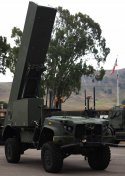One problem - Out of all three of the H-6's K, J and N variants, only the N variant has mid-air refueling capability. The K and J variants cannot refuel mid-air.
And there isn't a lot of H-6Ns in the PLAAF either - The estimate likely hovers around 10 units this year.
Therefore, until the H-20 (which I believe is certain to be equipped with mid-air refueling capability from the get-go) is introduced into PLAAF service in large enough numbers, or at least retrofit the H-6's K and J variants with mid-air refueling capability - China's long-range strike capabilities up against the 2IC is still rather limited by payload capacity.
There won't just be H-6s shooting missiles but stuff like the J-20 if its refuelled as well. Would J-20s and less than a dozen H-6s generate less sorties than a couple dozen H-20s ? Sure. But it won't have that large of an effect imo.
JASSM-ER has a ranges of ~1000 kilometers, while the JASSM-XR has a range of ~1900 kilometers.
At those (standoff) ranges, even the non-stealthy B-52 and the less-stealthy B-1B can do the job.
Then there's also the LRHW with ranges of ~2700-3000 kilometers, which puts the coastal regions of China within range of Guam, or deep into China's interior if stationed on the Ryukyu Islands or Japan.
Last but not least, worth mentioning being the Tomahawks, with the later variants having ranges of ~1600-1800 kilometers.
Sure, apart from the LRHW, all other missiles are subsonic. But we do expect them to be utilized in missile swarms against PLA assets, which is still a considerable threat when launched in large enough numbers to attack from multiple domains with EW jamming support.
Good ideas. B1s B2s have very low readiness rates so the B-21 is definitely ideal but yes that would broadly speaking still work.
With the swarm threats China has the HHQ-9Bs in the same way that the US has SM 6s. I seriously wonder all the time of how many fires China has vs the US.
The PLA also have plenty of other defensive options against long ranged fires such as EW jamming. Not to mention that those 3k km distance missiles will be heavily tracked by the PLA. By 2030 I expect the PLA to have a much larger ISR complex in west pac than the US and many more fires.

